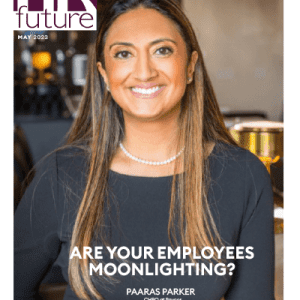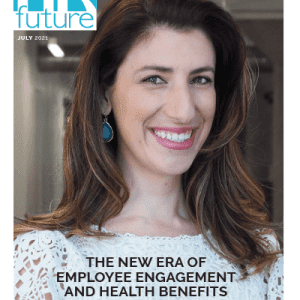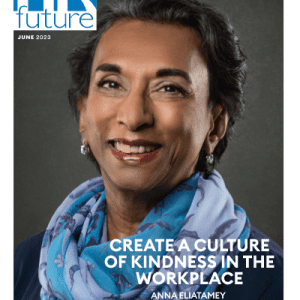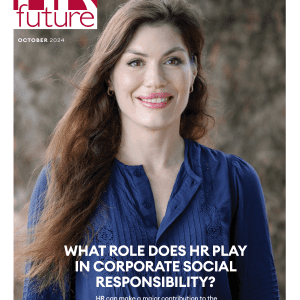Why creativity isn’t just for creatives, and how to find it.
Every human being on the planet possesses an abundance of creativity, adaptability and inspiration, and it stands to reason that when we come together in these communities that we call companies, there should be a multiplier effect. Yet our collective effort usually only produces a deficit of these characteristics.
Our organisations typically suffer from little to no creativity. In fact, focus on innovation in recent years has been cut in half, according to a McKinsey study of over 200 global companies.i I doubt that claim shocked you; we intuitively know this to be true.
Why is this so?
Primarily, we are burdened by underlying assumptions of how we are supposed to organise work, assumptions that for the most part originated at least 150 years old at the dawn of the Industrial Revolution.
We can uncover better solutions to fill the deep craters in our corporate spirit with the creative, fluid and humanistic approaches from artists and innovators, rather than solely from management engineers.
In every conference at which I speak, with every corporate client with whom I consult, I hear that we need to achieve a greater balance between the art and the science of work, particularly when the conversation turns to innovation. But we feel stuck, unable to make the changes we know we must.
A Boston Consulting Group study asked CEOs where innovation ranked as a strategic priority. Seventy-nine percent said it was a top three priority, and you have to wonder why that number wasn’t one hundred percent since you could argue that innovation is the only protection for remaining relevant.
So innovation is not an advantage; it is the advantage! However, a McKinsey study reported that ninety-four percent of employees say that their organisations are ineffective at innovation.iii I’m not sure that there is a bigger gap between how critical CEOs think something is and how bad we are at it, between what we know we need to do and what we actually do.
A significant factor behind this knowing-doing gap is that we’ve been trained as leaders since the beginning of the Industrial Age to push out those very human qualities that would better enable our organisations to navigate these turbulent waters: inspiration, innovation, adaptability, empowerment, curiosity.
While business has worked very hard to drive these qualities out with its incessant preference to value only those merits which can be acutely measured, the creative arts have always toiled to drive them in.
Yet the reason I am optimistic today is that we happen to live during one of those inflection points of history. Scientific management has had its day in the sun, making many executives and investors admittedly very wealthy. We now require a new Renaissance, a flowering of interchange between the arts and business whereby we recreate work around human fulfilment.
In the privileged position of a consultant and educator to executives, I hear from leaders all around the world who are feeling an unprecedented pressure to reinvent how they lead, learn, operate, structure, incentivize, hire, promote and communicate. Business must reflect the needs of its employees, customers and society in better ways than those we have experienced.
What’s creativity?
Perhaps we think of creativity as a product of a lifetime of cultivation, and therefore is too unwieldy to introduce into the boardroom. However, research has demonstrated that creativity is something with which you’re born and then develop or repress throughout your lifetime.iv But you can always rediscover it.
It’s odd that some people say, ‘I’m not creative,’ when put outside their comfort zone. We need to demystify creativity since it’s a natural state. Artist and executive facilitator Peter Moolan-Feroze says, ‘There’s a joy in not having to be an expert and in rediscovering that. For business people, this is often about renewal and reframing how one sees oneself in order to return to creativity.’v
What holds us back from this renewal?
Moolan-Feroze points out that we tend to overweigh experience: ‘Expertise locks us in, our ego rises and makes us fearful of stepping outside of that state. Expertise is important, but genuine creativity might include putting oneself in the shoes of the beginner.
That can be scary and is a primary reason we don’t innovate, so we can unlock that fear by using art to explore different parts of the self which are not so judgemental, where there is comfort in being wrong,’ or perhaps we might say there is comfort in pivoting from ‘impossible’ to ‘not impossible’. That requires the right environment where creativity can reflow.
As Evan Williams, co-founder, former chairman and CEO of Twitter said, ‘I definitely think people can learn how to be creative, but I think for the most part people unlearn how to do it.’vi To create the right environment to help with this very challenge, Moolan-Feroze works with companies and executive education groups at business schools to facilitate playful exercises that tease out the participants’ perceptions of their realities and sometimes of themselves.
For example, executives spend a lot of time trying to get better at leading change since their companies are in a constant state of flux. So Peter Moolan-Feroze leads an exercise that helps senior managers reveal how and what they think about change itself. In this exercise, Peter asks them to draw a white coffee cup that he places at the front of the room.
Next to the drawing, he encourages the group to write or draw their feelings and observations about the cup, then write a poem to a child about the cup. Then Peter asks his group to draw the cup again through the lens of the poem they’ve just composed. Now the participants are not just drawing the cup but their feelings and perceptions as they evolved throughout their poems.
They have to reach for a higher understanding of their own philosophy about transformation. On one programme, an executive threw down his pastels exclaiming, ‘This is ridiculous, a waste of time!’ He was struggling to express himself outside of relying on traditional expertise. While this man didn’t see the point of the exercise on that day, a year later Peter received an email from the executive saying he’d taken a cup home and put it on his mantlepiece to remind him to be more open minded.
Much of how we have observed and experience creativity in business or anywhere else is in relation to rediscovering play and curiosity that is every child’s normal state. The rediscovery of that state reveals a new openness to change because it’s an adventure rather than a trial. If leaders embrace this openness, then their organisations too increase their capability for transformation, innovation and inspiration.
In his poem Little Gidding, T.S. Eliot mused, ‘The end of all our exploring will be to arrive where we started and know the place for the first time.’vii The last time in human history that the worlds of creativity, art and commerce naturally intertwined regularly and synergistically was in the Renaissance, that revolutionary time of human invention.
Today, leaders’ ability to spark success will be correlated to their willingness to rediscover lost aspects of their nature, as if from under an old and beloved rock in the garden, and remember their proficiency as creative prodigies.
References
i Jordan Bar Am, Laura Furstenthal, Felicitas Jorge and Erik Roth, ‘Innovation in a crisis: Why it is more critical than ever,’ McKinsey, 17 June 2020.
ii Michael Ringel, Andrew Taylor and Hadi Zablit, ‘The Most Innovative Companies 2015,’ BCG Report, 2 December 2015.
iii Paul Cobban, Rahul Nair and Natalie Painchaud, ‘Breaking Down the Barriers to Innovation,’ Harvard Business Review, November-December 2019.
iv Greg Orme, The Human Edge (Harlow: Pearson Education, 2019).
v Interview with Peter Moolan-Feroze, 2020.
vi Chris Griffiths with Melina Costi, Grasp the Solution (Delhi: Proactive Press, 2011), 22.
vii T.S.Eliot, Little Gidding (London: Faber and Faber, 1942).
Adam Kingl is a speaker, educator, adviser and author who specialises in the areas of leadership creativity, innovation and adaptability. He is an adjunct faculty member at the UCL School of Management and at Hult Ashridge Business School, and is an instructor at Imperial College London, Sauder Business School, the Irish Management Institute at University College Cork, and at Headspring Executive Development. He is also an Associate of the Moller Leadership Institute of Churchill College, University of Cambridge. He is author of Sparking Success: Why Every Leader Needs to Develop a Creative Mindset published by Kogan Page.


















